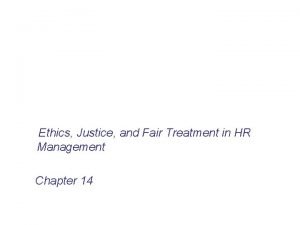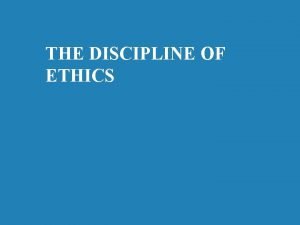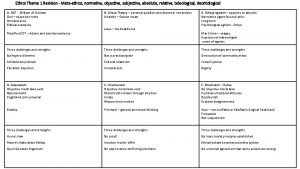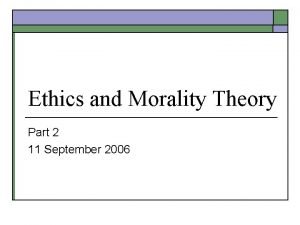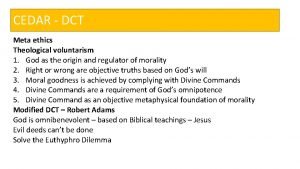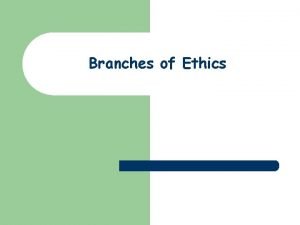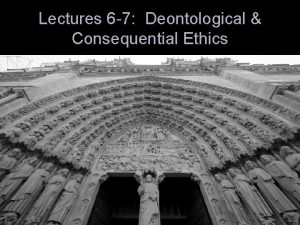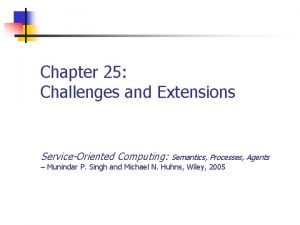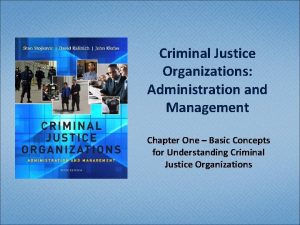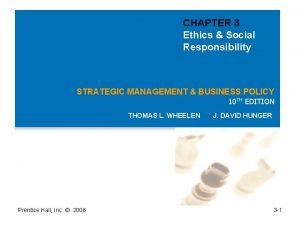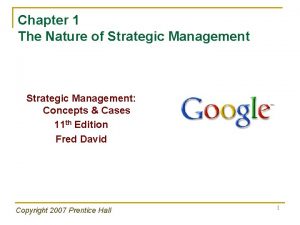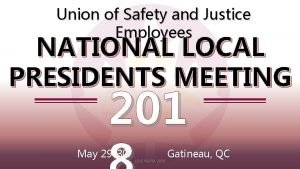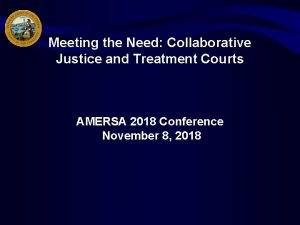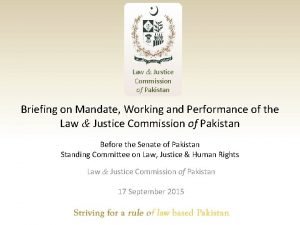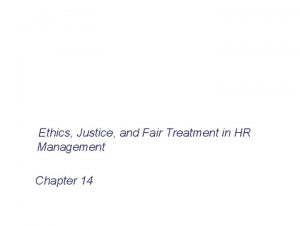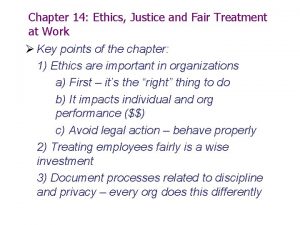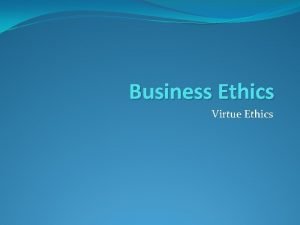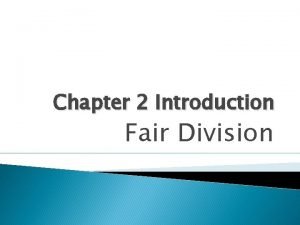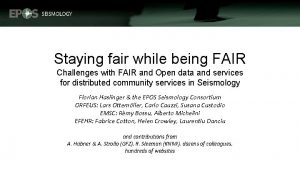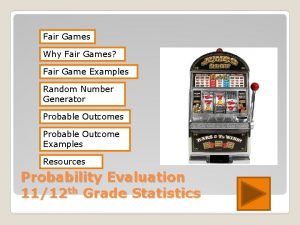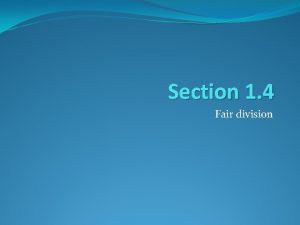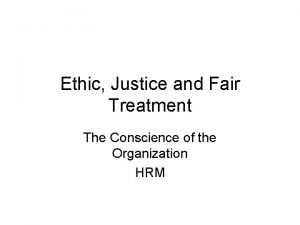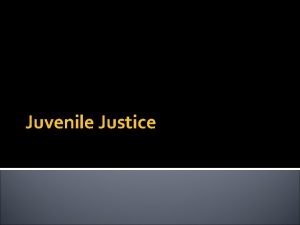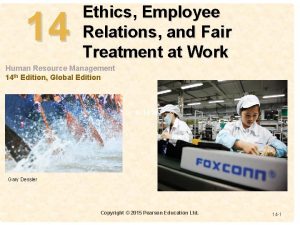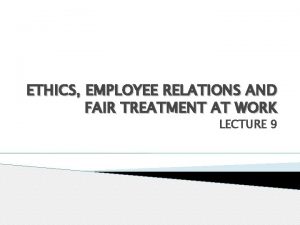Ethics Justice and Fair Treatment in HR Management

































- Slides: 33

Ethics, Justice, and Fair Treatment in HR Management Chapter 14

Ethics and Fair Treatment at Work Ø Ethics – The principles of conduct governing an individual or a group; specifically, the standards you use to decide what your conduct should be. – Ethical behavior depends on the person’s frame of reference.

Factors affecting ethical decisions Ø Normative judgments – Judging something as good or bad, right or wrong, better or worse. Ø Moral standards (Morality) – Society’s accepted standards for behaviors that have serious consequences to its well-being. • Behaviors that cannot be established or changed by decisions of authoritative bodies. • Behaviors that override self-interest.

Ethics and Fair Treatment at Work (cont’d) Ø Ethics and the law – – Some behaviors may may be be legal but unethical. illegal but ethical. both legal and ethical. both illegal and unethical.

Ethics, Fair Treatment, and Justice Ø Distributive justice – The fairness and justice of a decision’s result. Ø Procedural justice – The fairness of the process by which the decision was reached. Ø Interactional (interpersonal) justice – The manner in which managers conduct their interpersonal dealings with employees.

What Shapes Ethical Behavior at Work? Ø Individual factors Ø Organizational factors Ø The boss’s influence Ø The organization’s culture

Principal Causes of Ethical Compromises Note: 1 is high, 9 is low. Sources: O. C. Ferrell and John Fraedrich, Business Ethics, 3 rd ed. (New York: Houghton Mifflin, 1997), p. 28; adapted from Rebecca Goodell, Ethics in American Business: Policies, Programs, and Perceptions (1994), p. 54. Permission provided courtesy of the Ethics Resource Center, 1120 6 th Street NW, Washington, DC: 20005.

HR Ethics Activities Ø Staffing and selection – Fostering the perception of fairness in the processes of recruitment and hiring of people. • Formal procedures • Interpersonal treatment • Providing explanation

The Wall Street Journal Workplace-Ethics Quiz Source: Wall Street Journal, October 21, 1999, pp. B 1–B 4; Ethics Officer Association, Belmont, MA; Ethics Leadership Group, Wilmette, IL; surveys sampled a cross-section of workers at large companies and nationwide.

Ethical Quiz Ø Questions employees should ask when faced with ethical dilemmas: – – – – Is the action legal? Is it right? Who will be affected? Does it fit the company’s values? How will it “feel” afterwards? How will it look in the newspaper? Will it reflect poorly on the company?

HR Ethics Activities (Cont’d) Ø Training – How to recognize ethical dilemmas. – How to use ethical frameworks (such as codes of conduct) to resolve problems. – How to use HR functions (such as interviews and disciplinary practices) in ethical ways.

The Role of Training in Ethics

The Role of Training in Ethics (cont’d)

HR Ethics Activities (cont’d) Ø Performance appraisal – Appraisals that make it clear the company adheres to high ethical standards by measuring and rewarding employees who follow those standards. Ø Reward and disciplinary systems – The organization swiftly and harshly punishes unethical conduct.

Employee Privacy Ø Employee privacy violations upheld by courts: – – Intrusion (locker room and bathroom surveillance) Publication of private matters Disclosure of medical records Appropriation of an employee’s name or likeness Ø Actions triggering privacy violations: – – Monitoring off-duty conduct and lifestyle Drug testing Workplace searches Monitoring of workplace

Employee Privacy (cont’d) Ø What do employers monitor about employees: – E-mail activity – Internet use – Telephone calls

Restrictions on Workplace Monitoring Ø The Electronic Communications Privacy Act (ECPA) – The “business purpose exception” permits employers to monitor communications if they can show a legitimate business reason for doing so. Ø Employers monitor employees to: – Improve productivity. – Protect from computer viruses – Detect leaks of confidential information – Guard against liability for illegal acts and harassment suits caused by employee misuse Ø The “consent exception” allows employers to monitor communications if they have their employees’ consent to do so.

Sample Telephone Monitoring Acknowledgement Statement Source: Reprinted with permission from Bulletin to Management (BNA Policy and Practice Series) 48, no. 14, Part II, (April 3, 1997), p. 7. Copyright 1997 by The Bureau of National Affairs, Inc.

Managing Dismissals Ø Dismissal – Involuntary termination of an employee’s employment with the firm. Ø Terminate-at-will rule – Without a contract, the employee can resign for any reason, at will, and the employer can similarly dismiss the employee for any reason (or no reason), at will. – Limitations on “terminate-at-will” • Violation of public • Implied contract • Good faith

Grounds for Dismissal Ø Unsatisfactory performance – Persistent failure to perform assigned duties or to meet prescribed standards on the job. Ø Misconduct in the workplace – Deliberate and willful violation of the employer’s rules: stealing, rowdy behavior, and insubordination. Ø Lack of qualifications for the job – An employee’s inability to do the assigned work although he or she is diligent. Ø Changed requirements or elimination of the job. – An employee’s inability to do the work assigned, after the nature of the job has changed. – Elimination of the employee’s job.

Insubordination 1. Direct disregard of the boss’s authority. 2. Flat-out disobedience of, or refusal to obey, the boss’s orders— particularly in front of others. 3. Deliberate defiance of clearly stated company policies, rules, regulations, and procedures. 4. Public criticism of the boss. Contradicting or arguing with him or her is also negative and inappropriate. 5. Blatant disregard of reasonable instructions. 6. Contemptuous display of disrespect and, portraying these feelings while on the job. 7. Disregard for the chain of command, shown by going around the immediate supervisor or manager with a complaint, suggestion, or political maneuver. 8. Participation in (or leadership of ) an effort to undermine and remove the boss from power.

Managing Dismissals (cont’d) Ø Foster a perception of fairness in the dismissal situation by: – Instituting a formal multi-step procedure (including warning). – Having a supervising manager give full explanations of why and how termination decisions were made. – Establishing a neutral appeal process also fosters fairness.

Managing Dismissals (cont’d) 1. Issue an oral reminder. 2. Should another incident arise within six weeks, issue a formal written reminder, a copy of which is placed in the employee’s personnel file. 3. Give a paid, one-day “decision-making leave. ” 4. If no further incidents occur in the next year, remove the one-day paid suspension from the person’s file. If the behavior is repeated, the next step is dismissal.

Avoiding Wrongful Discharge Suits Ø Bases for wrongful discharge suits: – Discharge does not comply with the law. – Discharge does not comply with the contractual arrangement stated or implied by the firm via its employment application forms, employee manuals, or other promises. Ø Avoiding wrongful discharge suits – Set up employment policies and dispute resolution procedures that make employees feel treated fairly. – Do the preparatory work that helps to avoid such suits.

The Termination Interview Ø Plan the interview carefully. – Make sure the employee keeps the appointment time. – Never inform an employee over the phone. – Allow 10 minutes as sufficient time for the interview. – Use a neutral site, never your own office. – Have employee agreements, the human resource file, and a release announcement (internal and external) prepared in advance. – Be available at a time after the interview in case questions or problems arise. – Have phone numbers ready for medical or security emergencies.

The Termination Interview (cont’d) Ø Get to the point. – Do not beat around the bush by talking about the weather or making other small talk. – As soon as the employee enters, give the person a moment to get comfortable and then inform him or her of your decision. Ø Describe the situation. – Briefly explain why the person is being let go. – Remember to describe the situation rather than attack the employee personally – Emphasize that the decision is final and irrevocable.

The Termination Interview (cont’d) Ø Listen. – Continue the interview until the person appears to be talking freely and reasonably calmly about the reasons for his or her termination and the support package (including severance pay). Ø Review all elements of the severance package. – Describe severance payments, benefits, access to office support people, and the way references will be handled. However, under no conditions should any promises or benefits beyond those already in the support package be implied.

The Termination Interview (cont’d) Ø Identify the next step. – The terminated employee may be disoriented and unsure what to do next. – Explain where the employee should go next, upon leaving the interview.

Termination Assistance Ø Outplacement Counseling – A systematic process by which a terminated employee is trained and counseled in the techniques of conducting a self-appraisal and securing a new job appropriate to his or her needs and talents. • Outplacement does not imply that the employer takes responsibility for placing the person in a new job. • Outplacement counseling is part of the terminated employee’s support or severance package and is often done by specialized outside firms.

Termination Assistance (cont’d) Ø Outplacement firms – Can help the employer devise its dismissal plan regarding: • How to break the news to dismissed employees. • Deal with dismissed employees’ emotional reactions. • Institute the appropriate severance pay and equal opportunity employment plans.

Interviewing Departing Employees Ø Exit Interview – Its aim is to elicit information about the job or related matters that might give the employer a better insight into what is right—or wrong—about the company. • The assumption is that because the employee is leaving, he or she will be candid. • The quality of information gained from exit interviews is questionable.

Exit Interview Questions Ø How were you recruited? Ø Why did you join the company? Ø Was the job presented correctly and honestly? Ø Were your expectations met? Ø What was the workplace environment like? Ø What was your supervisor’s management style like? Ø What did you like most/least about the company? Ø Were there any special problem areas? Ø Why did you decide to leave, and how was the departure handled?

Key Terms ethics unsatisfactory performance distributive justice misconduct procedural justice insubordination interactional (interpersonal) justice wrongful discharge organizational culture nonpunitive discipline Discipline without punishment Electronic Communications Privacy Act (ECPA) dismissal termination interview outplacement counseling exit interviews
 Employee termination quotes
Employee termination quotes Foul is fair and fair is foul literary device
Foul is fair and fair is foul literary device Not so happy yet much happier literary device
Not so happy yet much happier literary device Foul is fair and fair is foul
Foul is fair and fair is foul Fair is foul and foul is fair literary device
Fair is foul and foul is fair literary device Fair play slide
Fair play slide Examples of fair is foul and foul is fair in macbeth
Examples of fair is foul and foul is fair in macbeth Sonnet has 14 lines
Sonnet has 14 lines Everyday ethics for the criminal justice professional
Everyday ethics for the criminal justice professional Micro vs macro ethics
Micro vs macro ethics Descriptive ethics vs normative ethics
Descriptive ethics vs normative ethics Non cognitivism
Non cognitivism Aspects of honesty
Aspects of honesty Metaethics vs normative ethics
Metaethics vs normative ethics Descriptive ethics vs normative ethics
Descriptive ethics vs normative ethics Beneficence
Beneficence Is/ought distinction
Is/ought distinction 2 branches of ethics
2 branches of ethics Deontological ethics example situation
Deontological ethics example situation Teleological ethics vs deontological ethics
Teleological ethics vs deontological ethics Business and society ethics and stakeholder management
Business and society ethics and stakeholder management Management in criminal justice organizations
Management in criminal justice organizations Social responsibility and ethics in strategic management
Social responsibility and ethics in strategic management Social responsibility and ethics in strategic management
Social responsibility and ethics in strategic management Strategic management benefits
Strategic management benefits Business ethics in strategic management
Business ethics in strategic management Guelph cjpp
Guelph cjpp Usje national office
Usje national office Symbolize the bravery of pnp?
Symbolize the bravery of pnp? Discuss the nature and concept of collaborative justice.
Discuss the nature and concept of collaborative justice. Law and justice commission of pakistan
Law and justice commission of pakistan What is corrections in criminal justice
What is corrections in criminal justice Unit 2 criminal law and juvenile justice
Unit 2 criminal law and juvenile justice Republic act 9344 juvenile justice and welfare act of 2006
Republic act 9344 juvenile justice and welfare act of 2006
